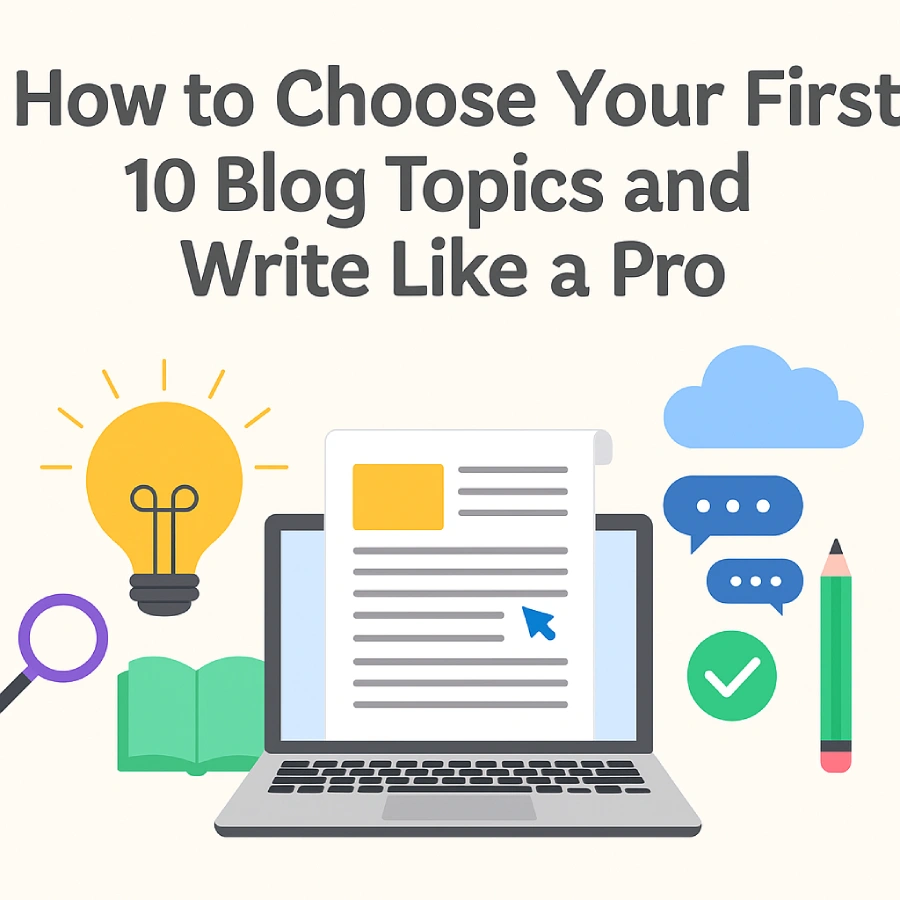Are you a new blogger but don’t know how to write your first blog? Want to pick your first 10 blog topics and write like a pro? Start by choosing subjects you enjoy and that interest your readers. Focus on simple, helpful ideas, answer common questions, and vary your post types. Plan your topics ahead, write clearly, and add your own voice. Keep practicing, and don’t wait for perfection, just start writing! Here are 10 steps to help you succeed.
Table of Contents
1. Pick What You Like

Start by writing about topics you enjoy or know well. When you write about what you love, your posts sound natural and interesting. It’s like talking to a friend about your favorite hobby — your excitement shows and makes your writing more fun.
For example, if you like cooking, share simple recipes or tips. If you enjoy sports, write about games or player stories. Even hobbies like reading or gaming make great blog topics.
Writing about what you enjoy helps you stay motivated and keeps readers coming back.
2. Think About Your Readers

Before you write, think about who will read your blog. Are they students, parents, or hobbyists? What do they want to learn or find? Knowing your readers helps you pick topics that interest and help them.
For example, if your audience is students, you can write study tips. If it’s parents, share family advice. Writing with your readers in mind makes your blog useful and interesting.
When you focus on your readers, your blog answers their questions and keeps them coming back for more.
3. Start Simple

When you begin blogging, focus on easy and basic topics. Simple posts help new readers understand your blog and what it offers. For example, if your blog is about fitness, write about “How to Begin Exercising” or “Basic Healthy Eating Tips.” Starting with simple ideas builds trust and shows you know your subject.
Simple topics also make writing easier for you. You don’t need to be an expert right away. As you grow, you can write about more detailed and advanced topics. Starting simple is a smart way to begin your blog.
4. Answer Common Questions
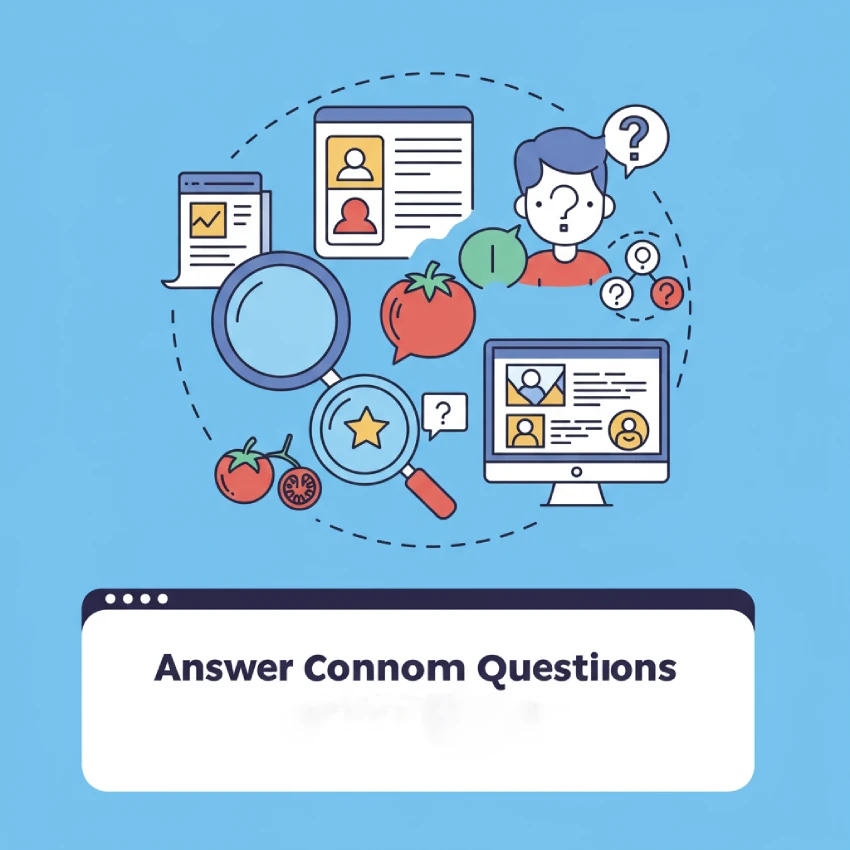
One of the best ways to find blog topics is by answering questions people ask. Look for common questions on social media, forums, or ask friends and family. For example, if your blog is about gardening, people might wonder, “How do I grow tomatoes?” Writing posts that answer these questions helps your blog become useful and easy to find.
Answering questions also shows you understand your readers’ needs. When people find the answers they want, they are more likely to trust your blog and return for more helpful tips.
5. Use Different Types of Posts
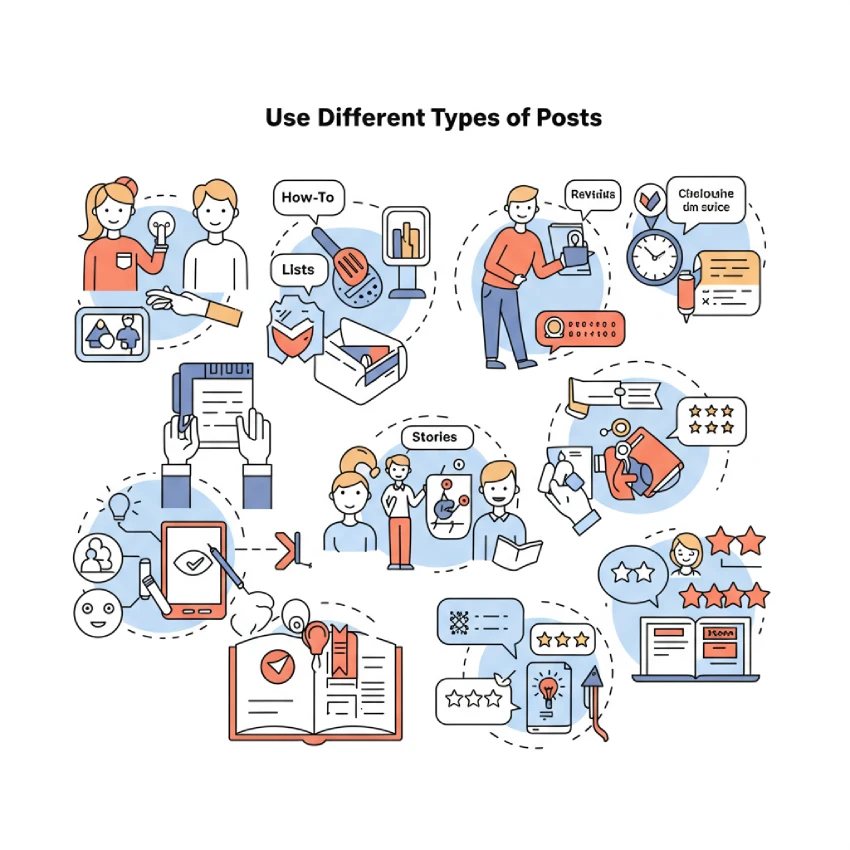
Keep your blog interesting by writing different kinds of posts. You can write how-to guides, lists, stories, or reviews. For example, one post could be “5 Easy Breakfast Ideas,” while another might be “My First Camping Trip.” Mixing up your posts shows your personality and keeps readers engaged.
Using different formats helps you reach more readers. Some people like lists, others prefer stories. Trying new types of posts can also help you find what works best for you and your audience.
6. Make a Plan

Before you start writing, make a list of your first 10 blog topics. Planning helps you stay organized and avoid stress. It ensures you have a mix of interesting subjects for your readers.
Having a plan also helps you write consistently. Instead of searching for ideas every day, you’ll know what to write next. You can change your plan later if you find better topics or new ideas.
A simple plan keeps your blog on track and makes it easier to grow your audience over time.
7. Write Clearly

Good writing is simple and easy to understand. Use short sentences and common words. Write like you are talking to a friend. This makes your blog more friendly and easy to read.
Break your text into small paragraphs. Use headings and lists to organize ideas. This helps readers find information quickly.
Before publishing, check your work for spelling and grammar mistakes. Clear writing keeps readers interested and shows you care about your blog.
8. Be Yourself

Your blog should sound like you. Write honestly and share your thoughts and feelings. When you are genuine, readers feel connected to you.
Don’t worry about sounding perfect. People enjoy reading blogs that are real and personal. Your unique voice makes your blog different from others.
Being yourself also makes writing easier. When you write naturally, your passion shows, and that keeps readers coming back for more.
9. Keep Improving

After you publish your posts, pay attention to what readers like most. Look at which posts get more views or comments. Writing more about popular topics helps your blog grow.
Practice your writing regularly to get better. Try new ideas and styles to see what works best for you and your readers.
Remember, blogging is a skill that improves over time. The more you write and learn, the easier and more enjoyable it becomes.
Keep learning from feedback and always look for ways to improve your content.
10. Just Start Writing
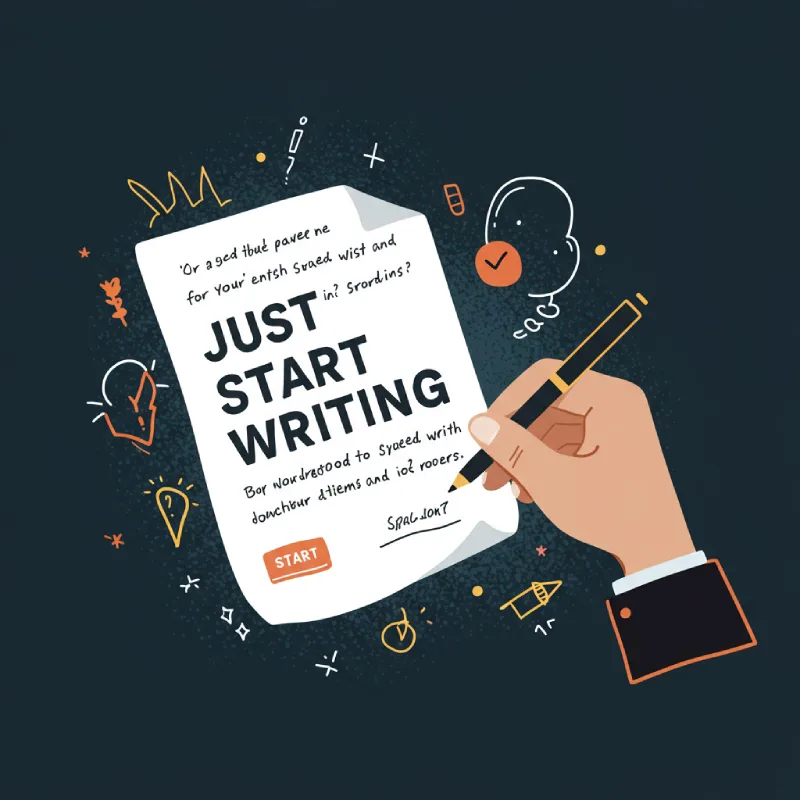
Many new bloggers wait too long for the perfect idea or perfect words. The best thing is to start writing now. Your first 10 posts don’t have to be perfect — they are just the beginning of your journey.
As you write more, you will improve and find your own style. Don’t be afraid to make mistakes; they help you learn. The important thing is to keep going and enjoy the process.
Starting now gives you a chance to grow and succeed with your blog.
SEO to Boost Your Blog
SEO, or Search Engine Optimization, helps your blog show up on search engines like Google. Using SEO well can bring more visitors and help your blog grow faster. Here are easy and effective SEO tips to start with:
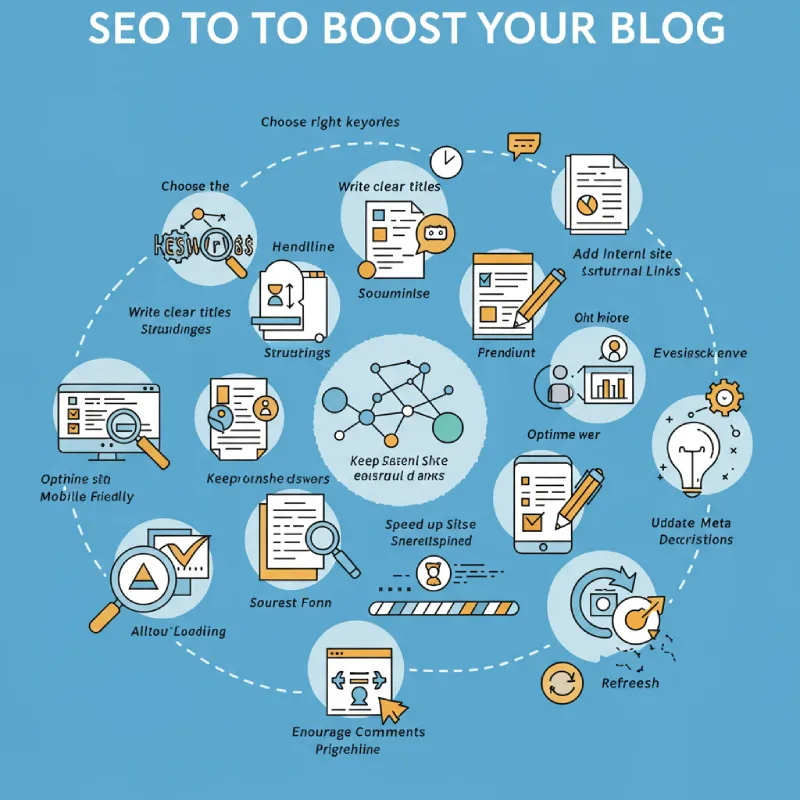
- Choose the Right Keywords: Use words people search for related to your topic. Include these keywords naturally in your title, headings, and content.
- Write Clear Titles: Make sure your blog post title clearly says what the post is about. Clear titles get more clicks.
- Use Headings: Break your posts into sections with headings to help readers and search engines understand your content.
- Add Internal Links: Link to other helpful pages on your blog to keep readers exploring your site longer.
- Include External Links: Link to trustworthy websites when you mention facts to build credibility.
- Keep Paragraphs Short: Short paragraphs and simple sentences make your posts easy to read on all devices.
- Optimize Images: Name your images with keywords and add “alt text” to describe them for better search visibility.
- Make Your Site Mobile-Friendly: Many readers use phones, so a mobile-friendly blog ranks better.
- Speed Up Your Site: Fast-loading pages keep visitors happy and improve search rankings.
- Use Meta Descriptions: Write a short summary for your post that appears in search results to attract clicks.
- Encourage Comments and Shares: Reader engagement shows search engines your content is valuable.
- Update Old Posts: Keep your blog fresh by adding new information to older posts.
- Use Simple URLs: Make your web addresses clear and easy to remember with keywords.
Using these SEO steps can help boost your blog’s visibility and attract more readers over time. Start applying SEO today to build a strong foundation for your blog’s success.
Conclusion
Choosing your first 10 blog topics can be easy. Write about what you love and what your readers want. Start with simple ideas and vary your posts to keep things interesting. Write clearly, be yourself, and improve with each post. Most importantly, just start writing; your blog will grow and get better over time. With these steps, you’re ready to write like a pro and build a great blog from the start.
